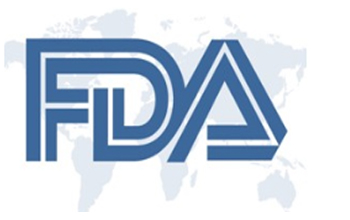
About FDA
Fda certification
The institution is closely related to the life of every American citizen. At the international level, the FDA is recognized as one of the world's largest food and drug administration agencies. Many other countries are promoting and monitoring the safety of their products by seeking and receiving FDA help.
Food and Drug Administration (FDA) Director: Food and Drugs (including veterinary drugs), medical devices, food additives, cosmetics, animal food and medicine, alcoholic beverages with less than 7% alcohol content and supervision and inspection of electronic products; , There are radiation products, combined products and other personal health and safety related to electronic products and medical products. Products in the use or consumption of ions generated during the process, non-ionic radiation affect human health and safety project testing, testing and certification. According to regulations, the above products must be FDA certified to prove that the safety before sales in the market. FDA has the right to inspect the manufacturer and have the right to sue the offender. According to the different product range of supervision, can be divided into the following major regulatory bodies:
1, Food Safety and Practical Nutrition Center (CFSAN):
The center is the largest department of FDA workload. It is responsible for food safety in the United States other than meat, poultry and eggs outside the US Department of Agriculture. Although the United States is the safest country in the world for food supply, there are about 76 million foodborne illnesses each year, with 325,000 people requiring hospitalization due to foodborne illness, about five thousand people Died of food borne diseases. The Center for Food Safety and Nutrition is committed to reducing foodborne diseases and promoting food safety. And to promote a variety of plans, such as: HACCP plan to promote the implementation of.
The functions of the center include: ensuring the safety of substances and pigments added to food; ensuring the safety of food and ingredients developed through biotechnology; responsible for the management of food products (such as ingredients, nutrition and health statements) and cosmetics; To develop appropriate policies and regulations to manage dietary supplements, infant food recipes and medical foods; to ensure the safety of cosmetic ingredients and products, to ensure correct identification; to monitor and standardize the aftermarket of the food industry; to conduct consumer education and behavioral development; and State and local government cooperation projects; coordination of international food standards and safety.
2, Drug Evaluation and Research Center (CDER):
The Center aims to ensure the safety and efficacy of prescription and over-the-counter medicines, to assess them before the new drug is marketed, and to monitor more than 10,000 drugs sold on the market to ensure that the product meets the highest ever-updated standards. At the same time, the center also regulates the authenticity of advertisements on television, radio and publications. Strict supervision of drugs, to provide consumers with accurate and safe information.
3, Equipment Safety and Radiation Protection Health Center (CDRH):
The center is safe and effective in ensuring that new medical devices are listed. Because more than 20,000 companies around the world produce more than 80,000 types of medical devices from blood glucose monitors to artificial heart valves. These products are closely related to the lives of colleagues, so the center also regulates the nationwide after-sales service. For some products such as microwave ovens, televisions, mobile phones that can produce radiation, the center has also identified a number of corresponding safety standards.
4, Biological Products Assessment and Research Center (CBER):
The center regulates biological products that can prevent and treat disease and are therefore more complex than chemical-based drugs, including scientific research on the safety and efficacy of blood, plasma, and vaccines.
5, veterinary drug center (CVM):